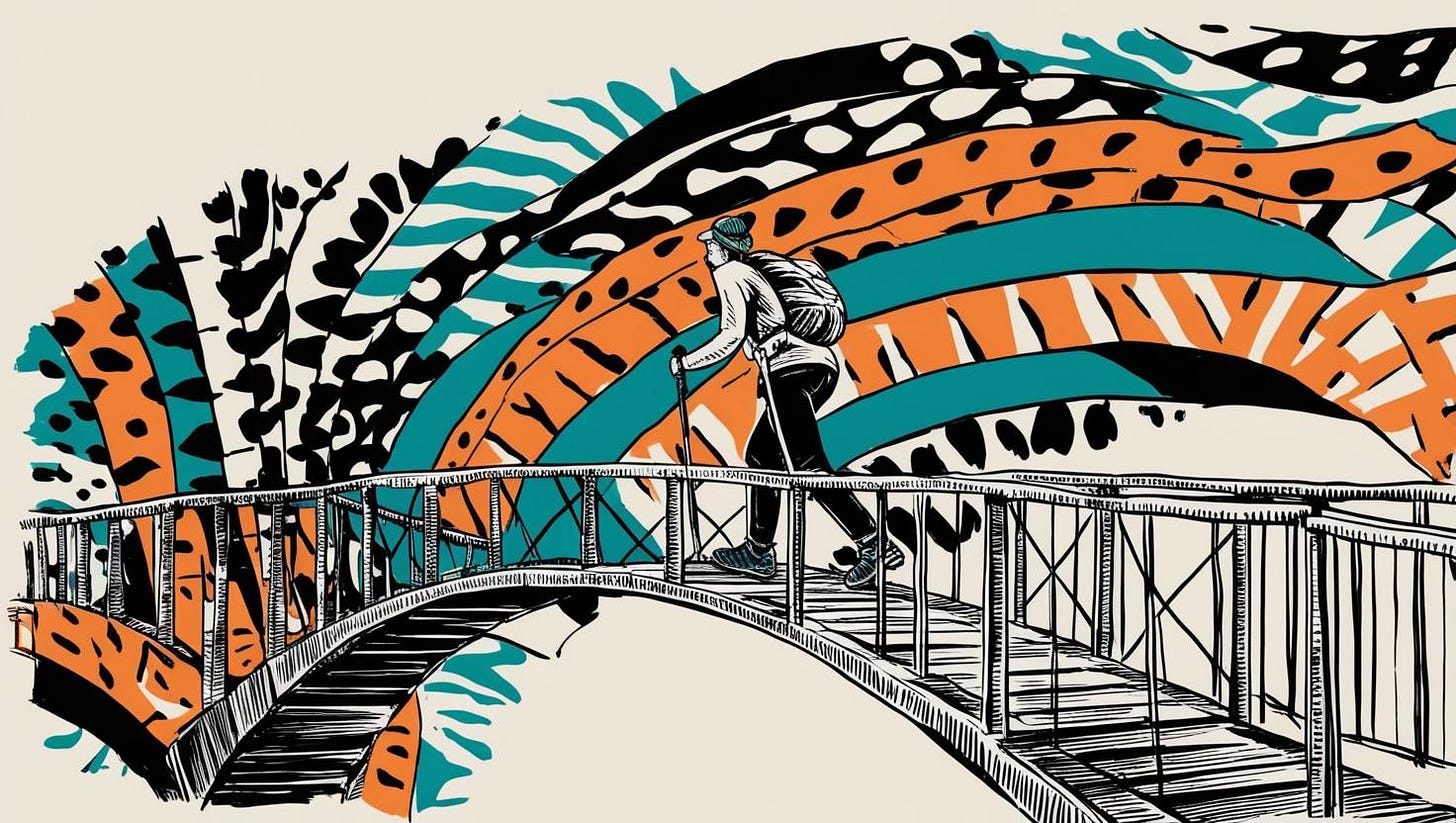Inadequacy Won Until I Practiced These 5 Things
From unsure to convinced — the bridge-to-better
The Surfacing of Inadequacy
When you approach the inadequacy bridge, it can be daunting; if you aren't mindful, it can be an avalanche of emotions. In a fragile state, you may feel too uncomfortable to do something you do not believe you are good enough to do in the first place.
We all face this in one area of our lives or another. Perhaps you feel inadequate in your new role at work; maybe you do not know how to be a good spouse or parent; or perhaps you feel like where you are is pure luck and not sustainable—all a natural feeling of imposture syndrome.
If you are to take one thing from this post, take this:
Your present moment is the right moment for your moment.
Classifying whether your current state is good or bad is just your mind trying to make sense of the feeling you are experiencing, a perception of how you THINK you should react to inadequacy.
Fight or flight? Wrong or right? I can or I can't? When these thoughts begin to treadmill your mind, it's a clear sign of feeling inadequate. Other feelings include:
Paralysis by analysis
Discouragement
Low self-worth
Looking for any way out
Choosing comfort over growth
Constant comparison
Seeking validation to take action
These feelings are the paradigm of inadequacy. This Resistor can steal a person's life by stealing their time. By doing nothing, you are doing something. And the something you do, which was nothing, will make you feel more and more inadequate.
Know there is no truth to inadequacy. The focus is learning how to get to a position where your emotional and logical mind intersect and can identify an opportunity for growth. With a bit of positive intention and practice, this is a simple framework for bridging the gap from inadequate to confidence.
“Courage is resistance to fear, mastery of fear, not absence of fear.”
~Mark Twain
Bridging the Gap
Strengthen your Awareness — You must catch your current mental state of when inadequacy is winning. What does it do to your physiology? Does your heart rate go up? Do you get anxious and bite your nails? To you pace? These are flags for you to pause and regroup. To acknowledge the situation without judgment and identify what to do next. The goal is to simply gain presence in what you are doing.
Leverage pattern-interrupt — Your present state may be on autopilot. Every one of us has a default programming. Over time, we condition ourselves to avoid pain, fear, failure, etc. In that nature, we choose the path of least resistance. Pattern interrupts interfere with your autopilot, making your brain and body present to intake "The new." Changing a routine, changing a traditional approach to a solution, and even pausing increases your sense of awareness. This simple practice can open the door to a small win. Small wins compound to significant results.
Build small wins that matter — Make the first action a small win as you identify what to do next. A small win can be as simple as writing the first 50 words, putting on your running shoes, simply getting outside, or dialing your first call with no expectations. Small wins often matter the most. Often, they matter more than the big wins because the small wins define your resilience and build your confidence over time. Remember, a significant result is just an accumulation of small wins.
Embrace that consistency is the key differentiator in everything you do — Every human is consistent. We consistently do the "Actionable" things (i.e., activities to improve our current state, the actions towards a change we want, etc.) Or we are consistently doing the "Nothings" (i.e., nothing is still something) that contribute to the opposite of what is listed above. Remember that consistency works both ways, and both paths lead to an outcome.
High-velocity; low-risk (Learn>Do>Teach) — How do you know when you have beat inadequacy? You never really do, but you learn to see it as a Resistor that you are familiar with and can win. One way to demonstrate and work through it is a familiar knowledge retention framework: to know, to do, and to teach. An alternative framework is called the 1-2-3 Method of Inadequacy—also known as high-velocity and low-risk. Give yourself one week to learn something, then two weeks to do it, and by the 3rd week, teach it to someone else. Watch how fast you grow in short order.
Inadequacy thrives in hesitation, but action, on the other hand, no matter how small, dismantles its grip. The bridge from doubt to certainty is built step-by-step, with awareness, pattern interruption, and small wins guiding the way. Start now, embrace the discomfort, and prove that inadequacy is not a stopping point—it is just a signal that personal change is waiting on the other side.
~DRL


